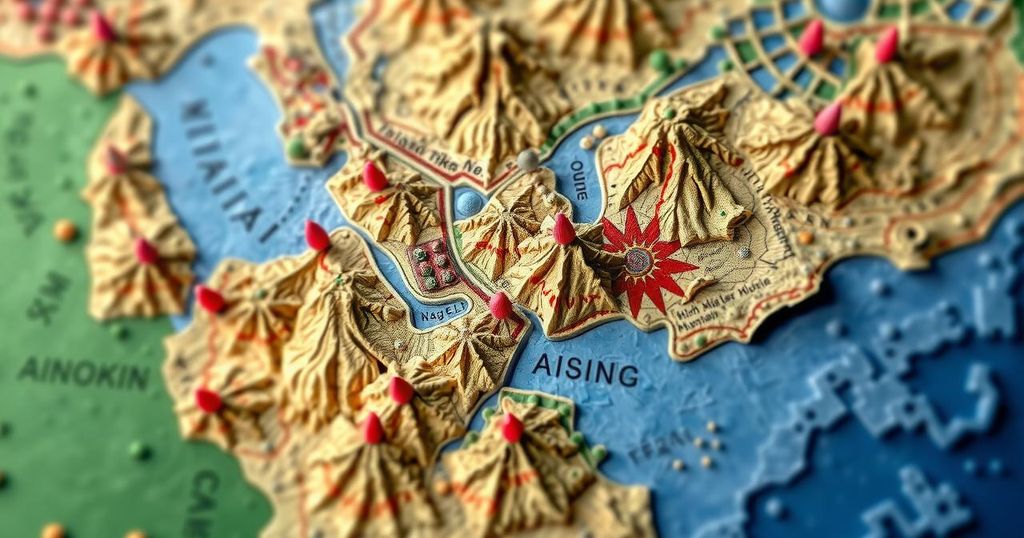A 4.6 magnitude earthquake occurred in Tajikistan, marking the eighth seismic event in 30 days. It struck at a depth of 80 kilometers near the Afghanistan border, impacting a nation classified as seismically active by the World Bank, which highlighted that a large percentage of the population lives in high-magnitude zones, thus raising concerns over safety and economic stability.
A magnitude 4.6 earthquake struck Tajikistan at a depth of 80 kilometers, specifically near the Garam Chashma hot springs in the Pamir Mountain range. This seismic event occurred close to the border that Tajikistan shares with Afghanistan, marking the eighth earthquake in the region within the last 30 days, according to the National Centre of Seismology. Tajikistan is recognized as a seismically active area, with a significant portion of its population residing in high-magnitude seismic zones.
The World Bank has classified the entire territory of Tajikistan as a seismic zone, with 50 percent designated in the 9 magnitude zone, 38 percent in the 8 magnitude zone, and 12 percent in the 7 magnitude zone. It was added that approximately 73.7 percent of the Tajik population, out of 8 million residents, live in regions at risk of 8 to 9 magnitude earthquakes, highlighting the vulnerability of the populace to seismic activities.
The report from the World Bank indicated that Tajikistan has experienced multiple earthquakes in recent years, leading to devastating impacts on both human lives and the national economy. The recurrence of these seismic events earlier pointed toward the need for focused attention on disaster preparedness and risk mitigation strategies in this seismically prone nation.
This earthquake is a reminder of the geological challenges faced by Tajikistan, further emphasizing the necessity for resilient infrastructure and comprehensive emergency responses to safeguard the residents from potential future earthquakes.
Tajikistan’s geographical location places it within a seismically active zone, as outlined in previous research by the World Bank. The country’s mountainous terrain, particularly in the Pamir region, contributes to its vulnerability to earthquakes. Recent reports suggest a concerning trend of increased seismic activity, necessitating proactive measures for disaster management and resilience building. Understanding the seismic context of Tajikistan is crucial for formulating effective policies to protect the population and minimize economic losses that typically accompany such natural disasters.
In conclusion, the recent earthquake in Tajikistan underscores the persistent seismic challenges faced by the region. With a significant portion of the population living in high-risk areas, it is evident that strengthened disaster response mechanisms and proactive planning are imperative. As Tajikistan navigates the implications of its seismic vulnerability, collaboration between governmental bodies, international organizations, and local communities will be critical in mitigating future risks and enhancing resilience against seismic threats.
Original Source: m.economictimes.com






